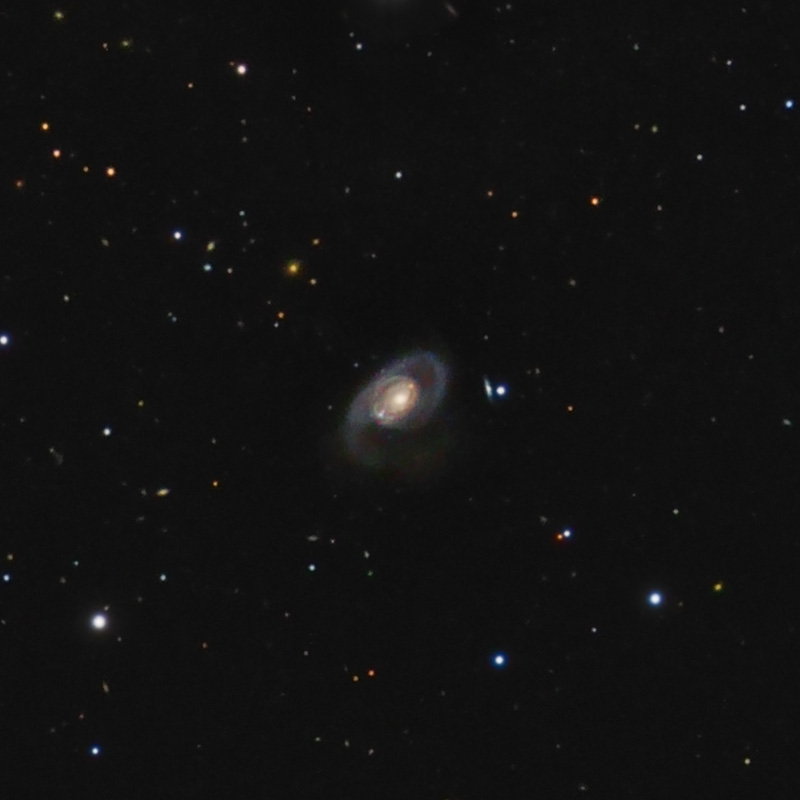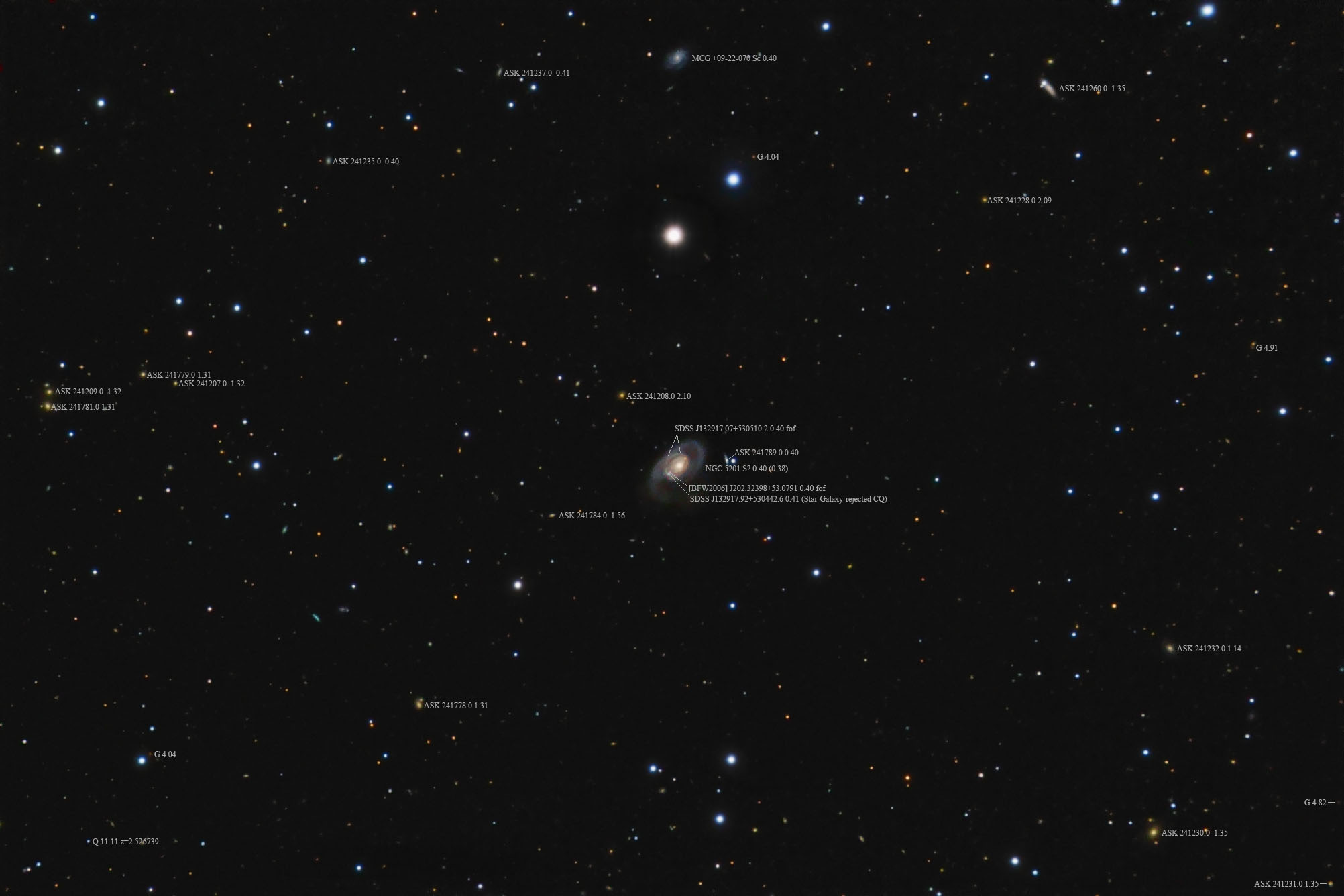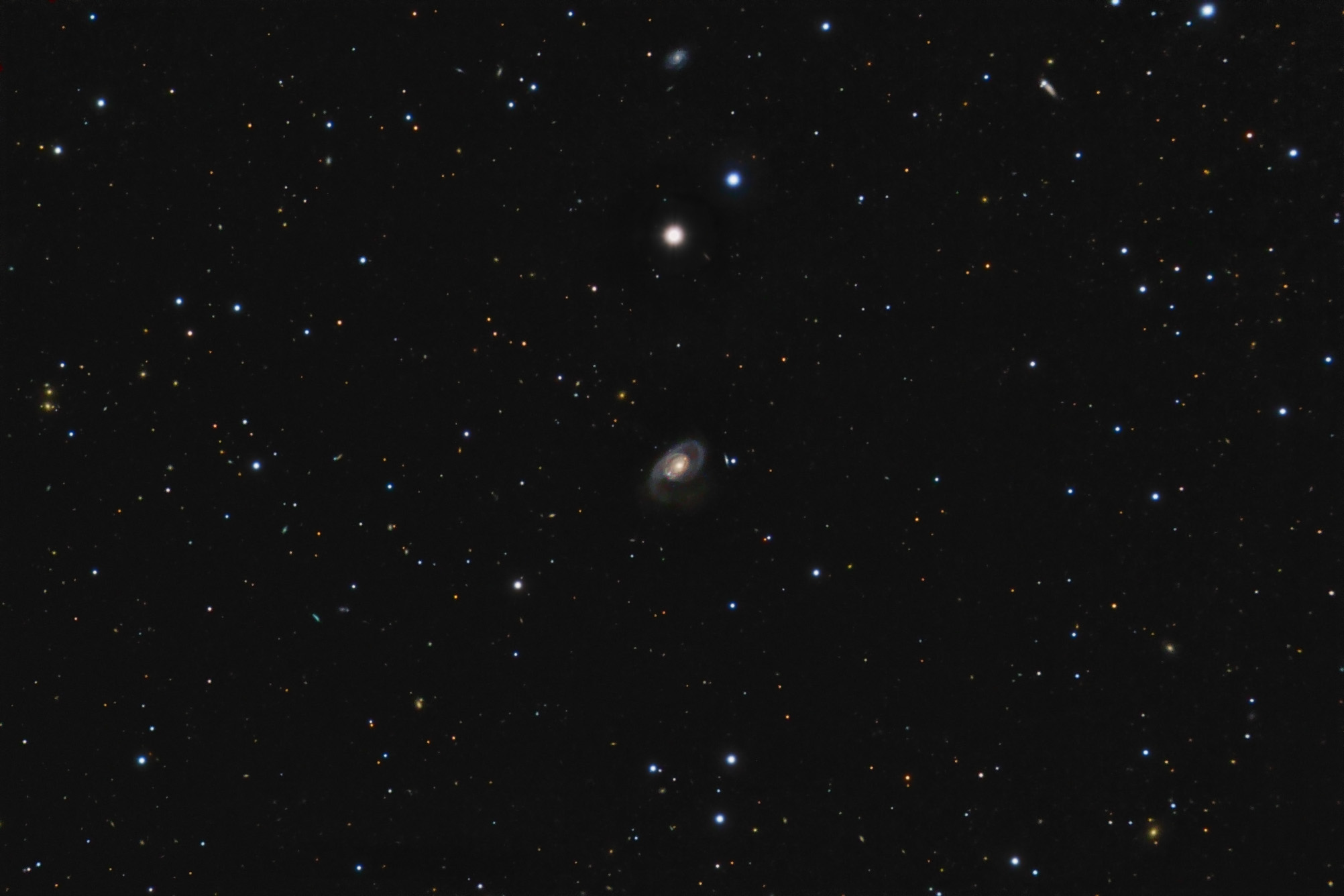| Description | Images |
Object name: NGC5201Designation(s): NGC5201, NGC 5201 is a very strange, huge galaxy in Ursa Major between the last two stars in the handle of the Big Dipper. Redshift measurements put it some 400 million light-years distant. Its huge arms or plumes spread out to cover a width of about 225,000 light-years. NED classifies it simply as S? Oddly no one seems to tack on a peculiar label. Arp didn't include it in his Atlas of Peculiar Galaxies either. Though the NGC Project says under Catalog Notes that it is peculiar. The UGC says: "Complex spiral pattern in center region, 2 smooth asymmetric outer arms. No disturbing object visible." NED, on the other hand, lists a brightening in one arm or plume as a galaxy. A red starlike feature southeast of the core as a galaxy and a blue starlike object just a couple seconds of arc further southeast as either a star, a galaxy and a rejected candidate quasar. All have redshifts that put them also about the distance of NGC 5201 though two are simply friend of a friend determinations which basically assumes them to be about the same distance. Only the blue starlike object has a spectroscopic redshift. Related Designation(s):2MASS J13291623+5304549, 2MASX J13291617+5304554, 2MASXi J1329165+530454, ASK 241787.0, CGCG 1327.2+5320, CGCG 271-045, HDCE 0792 NED003, IRAS F13273+5320, LDCE 0975 NED003, MAPS-NGP O_133_0191860, MCG +09-22-069, Mr18:[BFW2006] 07889 NED03, Mr19:[BFW2006] 16155 NED02, Mr20:[BFW2006] 26328 NED01, NGC 5201, NGC5201, NSA 042918, NVSS J132916+530456, PGC 047324, SDSS J132916.20+530455.1, SDSS J132916.21+530455.0, SDSS J132916.21+530455.1, SDSS J132916.22+530455.3, SDSS J132916.22+530455.4, SDSS J132916.32+530456.0, SDSS-g-bar-0213, SDSS-g-fon-0597, SDSS-i-bar-0225, SDSS-i-fon-0559, SDSS-r-fon-0591, UGC 08480, UZC J132916.5+530455, [BFW2006] J202.31761+53.08205 , [PJY2015] 587733079743856673 , [TTL2012] 264606, |


